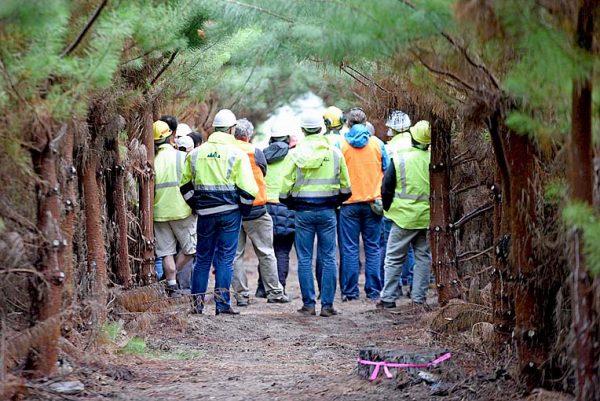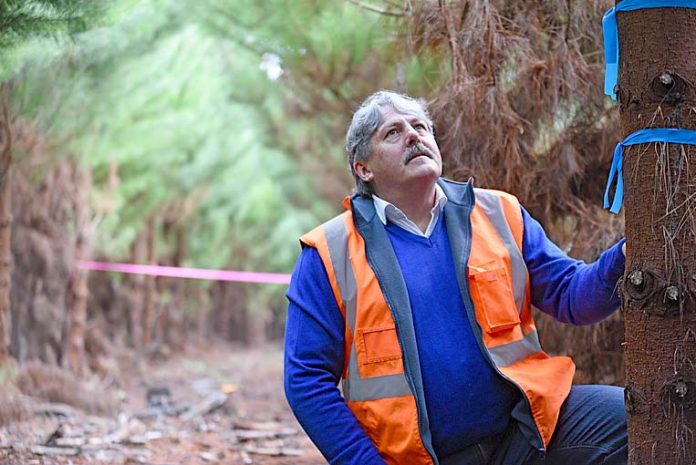
THE Green Triangle’s $2b forestry industry is on the cusp of a possible revolution as genetics technology emerges around the world that will fuel new products and jobs in the regional sector.
This was the message flowing from leading national and international forestry research scientists who gathered in Mount Gambier this week.
The Green Triangle forestry sector – considered to be among the world’s premier plantation woodfibre baskets – is considered well placed to tap into this “exciting” technology.
In Mount Gambier, the forestry sector accounts for around 10pc of total employment.
One of Australia’s leading forestry molecular geneticists Dr Josquin Tibbits – who toured a 7000-tree softwood research site near Mount Gambier this week – said the industry was sitting at the crossroads of new technology.
“It is really exciting – this is just the start,” said Dr Tibbits, who was lured to Mount Gambier for the Southern Tree Breeding Association’s meeting of scientists and foresters.
“We are on the edge of a new revolution – it is hugely valuable and people are working on this all around the world.
“There has been amazing technological innovation over the past 50 or even 150 years in the Green Triangle and it is not stopping.”
He said the research was underpinning current jobs and “new jobs we have not got yet”.
Explaining the evolution of products from trees was already under way, he said humans had been using trees for their whole existence.
“I cannot see them going out of fashion any time soon,” Dr Tibbits said.
“We are in a world where we are starting to realise the value of these renewable natural products – if you want to define sustainability, it is forestry.
“It is the only industry in the whole world – when it is done well – that is carbon positive. It’s absolutely renewable and people have been practising it in landscapes for hundreds of years – with many rotations of forests coming off the land.
“It is multiple purpose, it supports wildlife and people love timber products. ”
He said the long-term opportunities for the region’s forestry were unlimited and new products made from woodfibre would become a reality.
The senior scientists said there was even new technology allowing wood fibre to be significantly strengthened.
“They have managed to densify wood to the strength of titanium – it is stronger than steel,” the Victorian-based scientist said.
“You could start building aeroplanes or jumbo jets out of it – that is right at the front edge of science.”
But he said it would take years to flow through to industry production.
“If you think about trees they are great – you can turn them into houses, chemicals and batteries. Trees are standing batteries – they are harvesting energy from the sun.”
But he said the industry needed to continue to pour investment into driving innovation.
Dr Tibbits warned industry not to cut research dollars during “lean times” given the potential damage to the industry in the future.
“We need that stability and that continued grind,” he said.
“It believes in itself, it believes in its future – but with genetics you have to be patient because it takes time to go through the system.
“What is going out in the field today is genetics from seven or eight years ago.”
Dr Tibbits said the geneticists had now moved on from that and it was now working on the next generation of trees.
“The sawmill will not see it for another 10 or 14 years until the first thinnings harvest,” he said.






